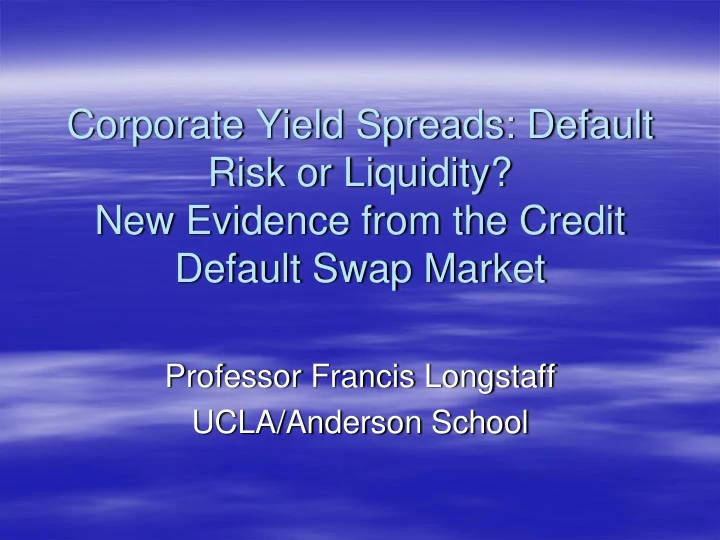

Corporate Yield Spreads: Default Risk or Liquidity? New Evidence from the Credit Default Swap Market Professor Francis Longstaff UCLA/Anderson School
Introduction � How are corporate bonds priced in the market? � In theory, corporate spreads should be fully explained by default risk. � In practice, many studies find that default risk only explains a small (5 to 25 %) fraction of corporate spreads.
Introduction � We use the information in credit-default swaps to directly measure the size of the default component in corporate spreads. � This also allows us to study the properties of the nondefault component of corporate spreads.
CDS Contracts � A credit-default swap has two legs. � Buyer of protection pays a quarterly annuity until either end of contract or a default. � If there is a default, buyer of protection can put bond back to protection seller at its par value. � We use an extensive data set on CDS prices and corporate bond yield provided by Citigroup global credit derivatives business.
The Approach � We use closed-form Duffie-Singleton model to value bonds and CDS contracts. � We fit the model simultaneously to corporate yields and CDS premia. � We use fitted model to imply the size of the default component for 76 firms. � We study the properties of the default and nondefault components of corporate spreads.
Findings � Most of the spread is due to default risk. � The nondefault component is due mostly to a general bond market liquidity factor, and individual corporate bond illiquidity features.
A CDS Term Sheet
Term Sheet
Term Sheet
Term Sheet
�
Percent due to Credit
Recommend
More recommend